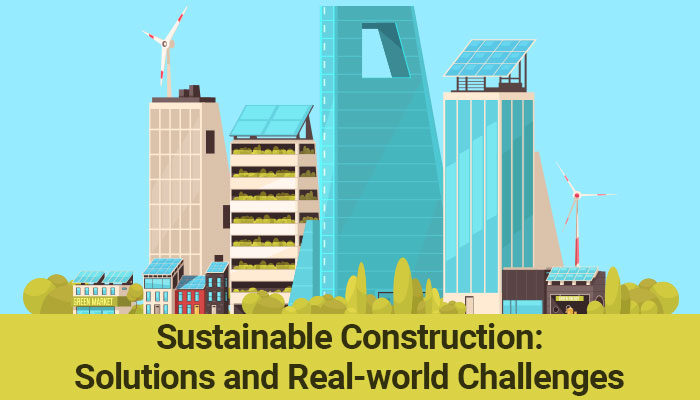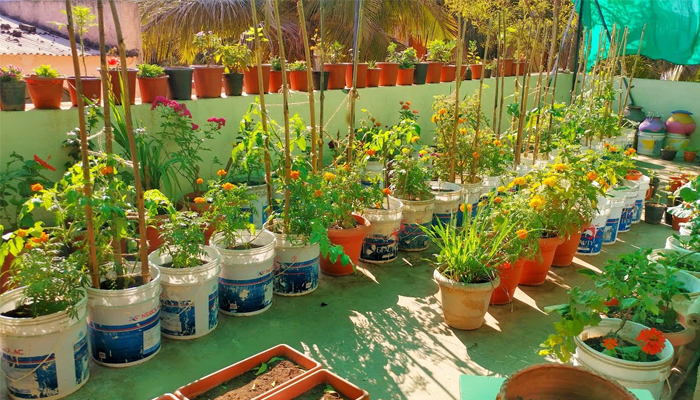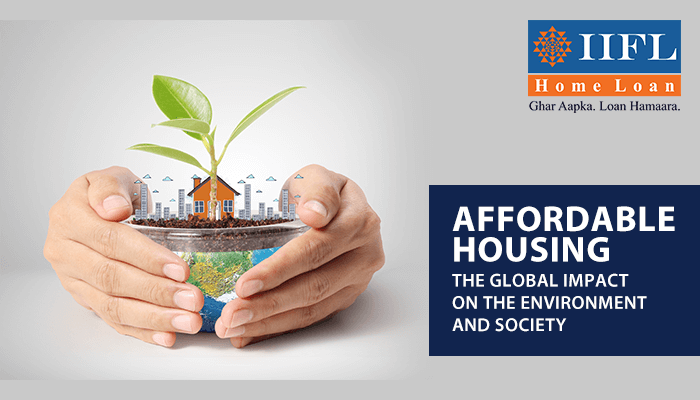Financial Institutions and Their Impact on Green Investments

Picture a future where every house you build or invest in not only offers a safe and comfortable shelter but also benefits the environment. A future where your financial choices lead to both profits and a greener world. This vision is attainable by fostering better collaboration between developers and climate-friendly investments through financial institutions. As a key player in India's housing and construction sector, financial institutions, such as IIFL Home Loans, hold the power to shape a more sustainable future for the nation. Here’s how!

What Roles do Financial Institutions Play in Promoting Green Investments?
-
Financing Green Initiatives:
Financial institutions that embrace green financing practices can help developers and investors adopt eco-friendly practices.
Green finance refers to the deployment of financial resources toward projects and initiatives that have a positive impact on the environment. Financial institutions act as catalysts for transformative change by directing funds toward green investments. Read more on the meaning of green finance on IIFL Home Loans.
-
Creating Tailored Green Financial Products:
Green financial products can drive sustainable practices in housing and construction. Offering tailored loans and insurance with preferential terms for eco-friendly projects can make a huge impact.
Further, specialized green investment funds tailored to finance projects with a clear focus on environmental sustainability, energy efficiency, and responsible resource management can be a good place to start.
-
Incorporating Environmental Risk Assessments:
As climate change poses greater risks to infrastructure and property investments, financial institutions must consider environmental risk assessments. Evaluating the projects' environmental impact and accounting for potential climate-related risks can prevent investments in projects that may become financially unviable due to environmental issues in the long run.
-
Capacity Building:
Financial institutions can invest in capacity-building initiatives for the construction industry to enhance its capability to build sustainable and energy-efficient homes at scale. This investment helps drive down the costs of green construction and further promotes affordability.
-
Collaboration and Partnerships:

Promoting sustainable finance cannot be achieved in isolation. Collaborating with government agencies, environmental organizations, and sustainable development experts can provide invaluable insights and opportunities for collective action. Pooling resources and expertise can lead to the development of holistic solutions that address the challenges of green and affordable housing in India.
These are only a few ways in which financial institutions are helping drive more climate-friendly investments. Among the vanguard of these institutions is IIFL Home Loans, dedicated to promoting sustainable financing in India's housing and construction sector. The company’s pet project, Green Value Partner, is a good example of how financial institutions in India are supporting the development of green affordable housing for the masses.
To Sum Up!
Financial institutions play a crucial role in promoting green projects through environmental finance options. They offer incentives, raise awareness, assess environmental risks, and build strategic partnerships to create a sustainable future. IIFL Home Loans leads the way in green finance, providing eco-friendly, affordable housing solutions. Check their website for more details on their offerings!
FAQs
1. How can banks and financial institutions transition to a green economy?
Key goals to transition to a green economy would be:
-
Bridge the gap between supply and demand
-
Unlock private environmental finance options
-
Evaluate economic as well as environmental perspectives in green initiatives
2. Can green financing help India achieve its climate goal of net-zero emissions?
There’s an ongoing effort to use green financing to decarbonize India’s industrial and transport sectors. Financial institutions are expected to help achieve net-zero emissions by financing more and more green infrastructure.
3. What is IIFL Home Loans’ GVP initiative?
It’s an effort by the financial institution to bridge the gap between developers’ lack of information on green buildings and new and sustainable ways of developing green housing in India.
4. How does IIFL Home Loans’ GVP help developers and architects?
It provides full support for green and affordable housing projects from start to finish. For details, check the brochure here.
5. What are the benefits of green investments?
-
Green investments aid energy efficiency and eco-friendly projects.
-
Investing in environmentally responsible ventures reduces climate-related risks.
-
Businesses adopting green investments enhance their reputation and brand image among consumers and stakeholders.
Tags
Disclaimer: The information contained in this post is for general information purposes only. IIFL Home Finance Limited (including its associates and affiliates) ("the Company") assumes no liability or responsibility for any errors or omissions in the contents of this post and under no circumstances shall the Company be liable for any damage, loss, injury or disappointment, etc. suffered by any reader. All information in this post is provided "as is", with no guarantee of completeness, accuracy, timeliness, or of the results, etc. obtained from the use of this information, and without warranty of any kind, express or implied, including, but not limited to warranties of performance, merchantability, and fitness for a particular purpose. Given the changing nature of laws, rules, and regulations, there may be delays, omissions, or inaccuracies in the information contained in this post. The information on this post is provided with the understanding that the Company is not herein engaged in rendering legal, accounting, tax, or other professional advice and services. As such, it should not be used as a substitute for consultation with professional accounting, tax, legal or other competent advisers. This post may contain views and opinions which are those of the authors and do not necessarily reflect the official policy or position of any other agency or organization. This post may also contain links to external websites that are not provided or maintained by or in any way affiliated with the Company and the Company does not guarantee the accuracy, relevance, timeliness, or completeness of any information on these external websites. Any/ all (Home/ Loan Against Property/ Secured Business Loan/ Balance Transfer/ Home Improvement Loan/ NRI Home Loan/ Home Loan for Uniformed Services) loan product specifications and information that may be stated in this post are subject to change from time to time, readers are advised to reach out to the Company for current specifications of the said (Home/ Loan Against Property/ Secured Business Loan/ Balance Transfer/ Home Improvement Loan/ NRI Home Loan/ Home Loan for Uniformed Services) loan.
 Login
Login






















